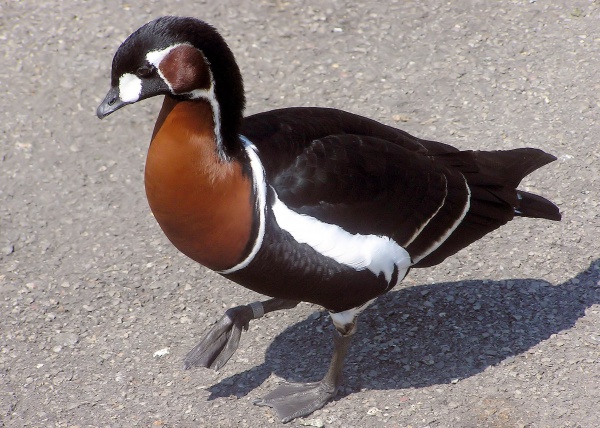Facts About Red-breasted goose
The red-breasted goose is a remarkably colorful bird currently listed as vulnerable by the IUCN. Found in Eurasia, this species belongs to the Branta genus. Genetic studies suggest that it likely emerged through hybridization between the ancestral brant goose and the white-cheeked goose. Despite its vivid red breast, the bird is small and can be difficult to spot among flocks of brant geese, as its red coloration can appear quite dark from a distance.
These geese breed in the harsh environments of Arctic Siberia but migrate to warmer climates for winter, primarily settling along the northwestern shores of the Black Sea. Some also migrate to Azerbaijan. Changes in agricultural practices have shifted their traditional wintering grounds, prompting conservation efforts to protect these new habitats. Interestingly, red-breasted geese often nest close to birds of prey, leveraging their fierce neighbors to deter predators.
Various conservation measures have been implemented to protect this species. These include legal protections, monitoring by the Agreement on the Conservation of African-Eurasian Migratory Waterbirds (AEWA), and several projects aimed at improving habitat quality and tracking migration routes. Despite these efforts, the red-breasted goose population has been declining for decades, resulting in its endangered status. This decline is largely due to habitat loss from human activities, such as the construction of wind turbines.
Conservationists are employing strategies like satellite tracking and in-depth research on migration patterns to better understand and protect these geese. Their goal is to ensure that the red-breasted goose has a fighting chance against the threats it faces, securing the survival of this beautiful species for future generations.

 Latvia
Latvia